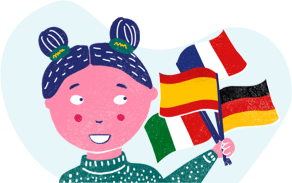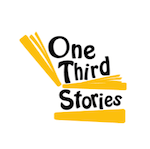Are you curious about what school life is like in the sunny lands of Spain? Join us as we take a delightful peek into the Spanish schooling system—a world where learning and living blend beautifully. Vamos an explorer!
The Structure of the Spanish Education System
In Spain, the passion for education engages young learners from “infantile” (preschool) to “secundaria” (secondary school). It’s a voyage of discovery, textures, and sounds that begins as early as age three!
An Overview of School Levels
From the tender age of 3, little learners begin their educational voyage in the nurturing environment of Spanish preschools. The higher grades build upon this foundation, challenging students with a progressive curriculum.
Public vs. Private Schools
Parents in Spain have the option of public schools (colegios publicos) funded by the state, semi-private schools (colegios concertados), partially funded by the state, and private schools (colegios privadoes), privately funded. Parents can choose which type of school aligns best with their educational goals.
The Spanish School Day
Some schools run from 9 a.m. to 5 p.m. with a two-hour lunch break from 1 p.m. To 3 p.m. Other schools begin at 9 a.m. and end at 2 p.m. Hours vary, but tend to attempt to coincide with the traditional emphasis of lunch and rest.
Daily Schedules and Breaks
Kids in Spain revel in a timetable that balances academic endeavors with breaks, allowing them to take a break and prepare to learn.
The Importance of Meal Times
Lunch, also called “la comida,” is a big deal. Forget quick snacks like sandwiches at your desk or grabbing pizza on a park bench. When you see quiet streets around lunchtime, it’s not siesta time—it’s when everyone in Spain is enjoying their main meal of the day, lunch!
Curriculum and Learning Approaches
Throughout their primary education, students in Spain tackle a variety of subjects. They learn Spanish language, mathematics, and ‘Conocimiento del Medio’—a subject combining science, history, geography, and social studies, often translated as “Knowledge of the Environment.”
This multifaceted subject encourages children to perceive learning as intertwined threads that contribute to the full picture of the past, present, and future. Whether it’s helping them understand the life cycle of a butterfly or discussing the reasons behind the changing seasons, “Conocimiento del Medio” provides a multidimensional approach to education.
Additionally, physical education keeps them active. The Spanish educational system blends classical subjects with modern teaching methodologies, emphasizing critical thinking and creative problem-solving instead of memorizing facts.
Focus on Bilingual Education
Language opens doors, and Spain knows it. The bilingual programs in Spain prepare children to succeed in a multilingual world right from the start.
Emphasis on Arts and Physical Education
The hallways of the school resonate with the sounds of guitar melodies and rhythmic footwork, underscoring the value placed on artistic and athletic education, which serves to stimulate the mind and nurture physical development.
During physical education, students get active with a variety of sports. They team up for soccer and basketball or go solo with tennis and track. Even the great outdoors beckons with adventures in hiking and camping. It’s all about moving, learning, and having fun.
Extracurricular Activities and After-School Programs
Beyond academics, Spanish schools are buzzing with clubs and activities. Students in Spain can engage in various extracurriculars, from athletics and the performing arts to language study, music, and beyond.
A Wide Range of Options
Whether it’s robotics, dance, or chess, Spanish schools offer an array of extracurriculars. Explore the opportunities that await eager learners after school hours. Choices abound, from chasing goals on the soccer field to scaling musical octaves – there’s a world of discovery after the day’s lessons.
The Role of After-School Programs
These programs act as greenhouses for growth and exploration – a space where individual interests meet.
Parental Involvement and School Community
Spanish schools warmly open their gates to families, nurturing a strong school community where parents are encouraged to be involved in their children’s education.
Encouraging Active Participation
The involvement of las familias is welcome; it’s woven into the fabric of school life, strengthening the threads that connect home and the classroom.
The Importance of Festivals and Celebrations
Traditions run deep in Spanish culture. We’ll celebrate the cultural events that teach kids about heritage and community, from local customs to national fiestas.
The Benefits of an International Perspective
Beyond the siestas and fiestas, the Spanish school experience offers a window to the world, preparing los niños for academia and a vida full of wonders.
In our lively journey, we’ve wandered through the lively playgrounds of Spanish schools, discovering educational treasures and moving to the beat of their vibrant educational culture. What an adventure! Whether you’re guiding children under the warm Spanish sun or adding a touch of Spanish zest to your teaching, these stories serve as your guide to a realm where learning intertwines with fun exploration. Let’s embrace the joy of learning more every day!



Choose a language
Our courses are available in French, Spanish, Italian and German.
Select a subscription
Choose between monthly or annual payment options.
Start learning
Receive your first audiobook and Story Box, and let the learning begin!.

Choose a language
Our courses are available in French, Spanish, Italian and German.

Select a subscription
Choose between monthly or annual payment options.

Start learning
Receive your first audiobook and Story Box, and let the learning begin!.
